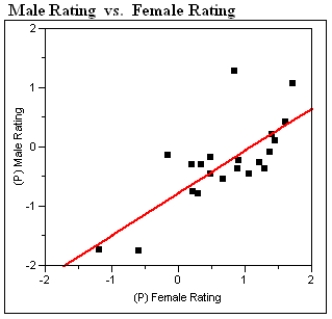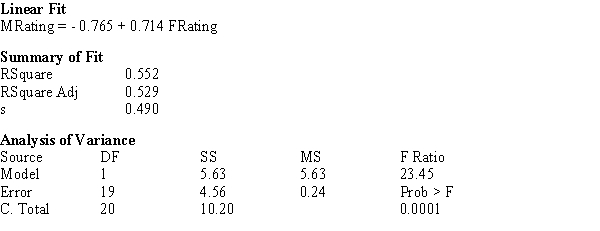Essay
As early as 3 years of age, children begin to show preferences for playing with members of their own sex, and report having more same-sex than opposite-sex friends. In a study of 3rd and 4th graders' views on 48 personality traits, children were asked to rate on a "5-point" scale:  A plot of the data is presented below. A single point represents the (average girls' rating, average boys' rating) for a given trait.
A plot of the data is presented below. A single point represents the (average girls' rating, average boys' rating) for a given trait. 

a) Circle the single point which represents the most influential observation. What aspect of this point makes it the most influential?
b) Suppose a personality trait similar to those used in the survey were given a 0.0 rating ("can't tell") by the girls. The predicted boys' average rating would be closest to which of the 5 categories described above?
c) The traits plotted above are those the researchers believe are "positive" traits, such as "mature," "honest," and "polite." The researchers thought that girls would rate these positive traits as characteristic of girls to a greater extent than boys would. What aspects of the plot and/or regression analysis presented above are consistent with this thinking?
Correct Answer:

Verified
a) The point circles on the graph (below...View Answer
Unlock this answer now
Get Access to more Verified Answers free of charge
Correct Answer:
Verified
View Answer
Unlock this answer now
Get Access to more Verified Answers free of charge
Q22: Assessing the goodness of fit of a
Q23: The data below were gathered on a
Q24: If r is close to 1, then
Q25: One of the properties of Pearson's r
Q26: The higher the value of the coefficient
Q28: The least squares line passes through the
Q29: A transformation, or reexpression, of a variable
Q30: If a scatter plot exhibits a strong
Q31: Pearson's correlation coefficient, r, does not depend
Q32: When children and adolescents are discharged from